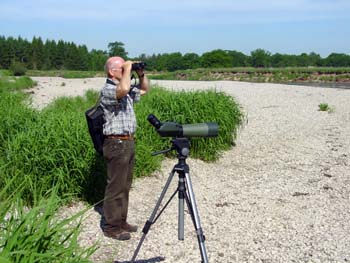Conservation Wardens
When methods used in traditional nature conservation are not enough, i.e. it can no longer be guaranteed in the protected areas that threatened plant species with individually weak populations are protected against extinction, the botanic gardens and conservation gardens established for this purpose are tasked with manning “intensive care units” to preserve these species.
At the end of the 90s it was suggested by Martin Luther University in Halle to establish a conservation garden at the biosphere reserve for threatened species native to the Middle Elbe region. This project got underway in 2001. The conservation garden is subdivided into a 100 m² area for plants native to dry locations and a 500 m² area for species native to seasonally wet areas. Currently 21 species on Saxony-Anhalt’s red list under the categories “Lost or Extinct”, “Threatened with Extinction” and “Very at Risk” are being cultivated and tended in the conservation garden. The plant species are acquired by collecting propagules in their natural habitat and then propagating them in the conservation garden. At the same time, Martin Luther University in Halle grows difficult to propagate taxons at its botanic gardens which are then transferred to the conservation garden as seed stock. Efforts are currently being made to increase the number of plant species to around 30.
The species are cultivated in separate beds and do not have to compete with other plants. This lack of competition allows the plants, which have different ecological needs, to be tended successfully under relatively uniform gardening conditions. In the best case scenarios, the plants run through their entire lifecycle from germination to budding and fruiting to self-sowing.
Aim of the conservation garden:
- Preserving genetic resources
- Trials on mowing tolerance for plant species of cultivated grasslands
- Provision of plant material for reintroduction
- Analysis of life forms and ways of life
- Training for determining rare and critical taxons.
Despite efforts to protect species in their natural habitats, the continued existence of many weak populations of taxons are only possible in conservation gardens.
